Exploring Classical Music on YouTube: A Comprehensive Guide
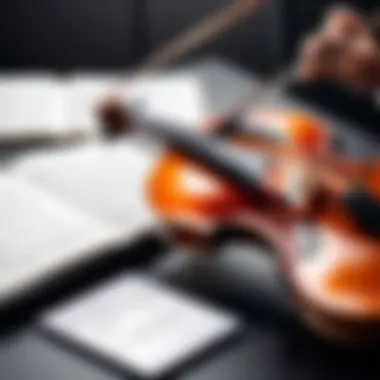
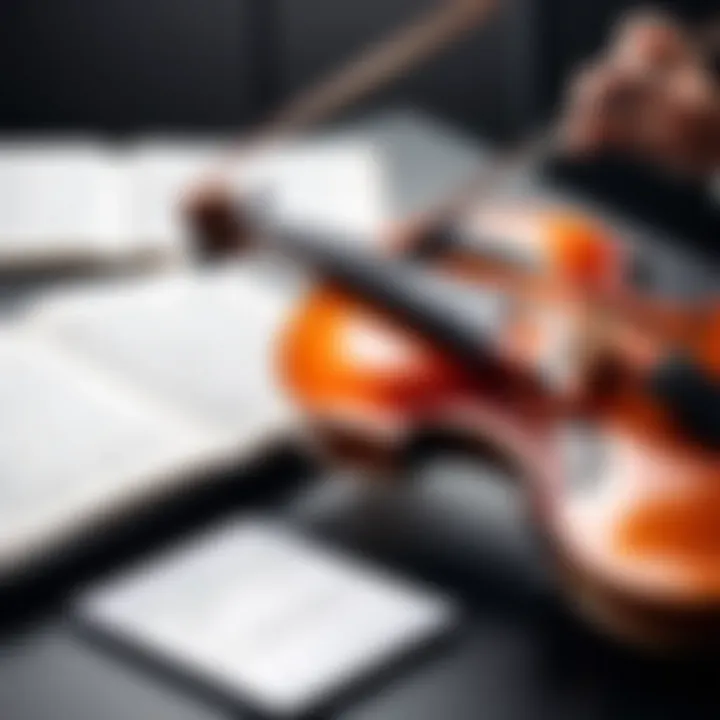
Intro
Classical music has deep roots in human history, offering a rich tapestry of sound that transcends cultures and eras. Today, YouTube serves as a powerful platform, enabling accessibility to classical music of all kinds, reaching audiences globally. This guide explores how YouTube democratizes classical music, while also providing an in-depth look at various features and resources available on this platform.
Technology Insights
The intersection of classical music and technology plays an essential role in shaping the way we consume art today. As technology continues to advance, platforms like YouTube have integrated these innovations to enhance user experience and broaden reach.
Latest Tech Trends
One significant trend in the realm of classical music on YouTube is the surge in high-definition video presentations. Performances are filmed using advanced camera techniques that capture not only sound but also the intricate details of orchestral and instrumental performances. Viewers can experience concerts from the comfort of their homes, achieving a new level of intimacy with the music.
Innovation in Tech
Innovations also extend to audio quality. YouTube now supports high-resolution audio, giving users access to clearer sound. Musicians and orchestras are taking advantage of this technology to upload their performances — an opportunity that changes how people experience this genre. Whether it is a solo piano piece or a full symphonic performance, these advancements make it feel like the audience is present in the concert hall.
Product Reviews
In this area, several channels stand out for their engaging content. Channels like the Berlin Philharmonic and Royal Concertgebouw Orchestra deliver refined performances alongside commentary that educates viewers about each composition's context. This fusion of education and entertainment is a valuable resource for both novices and seasoned classical musicians.
Educational Content
YouTube is not just a platform for performances; it also serves as a breeding ground for educational content related to classical music. Numerous channels focus on analysis and breakdown of classical pieces, providing insights into composers, history, and techniques used in compositions.
These channels often feature lessons on interpretation and various styles, which can enhance a viewer's appreciation for the music. Major channels like Classics for Kids and Coursera offer structured educational content, making the learning experience engaging and accessible.
"YouTube has transformed how we engage with classical music, providing tools for both enjoyment and learning." - Music Enthusiast
Community Engagement
The interactive nature of YouTube also fosters a strong community around classical music. Comment sections often serve as discussion boards where music lovers share their thoughts and interpretations. Additionally, live-streamed performances often invite real-time interaction, allowing audiences to engage with artists and conductors.
Synthesizing Information
Through the exploration of YouTube's offerings, it becomes evident that the platform has reshaped the landscape of classical music. Viewers now have unprecedented access to performances and educational resources, fostering a deeper appreciation for this genre.
As the technological landscape continues to evolve, we may anticipate further innovations in how classical music is shared and experienced, making this an exciting time for both artists and audiences.
Prelims to Classical Music on YouTube
The intersection of classical music and YouTube represents a significant cultural shift in how audiences engage with this genre. With the platform's expansive reach, it serves as a gateway to a vast array of classical music content. This section will delve into the importance of YouTube as a resource for both seasoned enthusiasts and newcomers alike. It also emphasizes the benefits of utilizing the platform for musical exploration.
Overview of YouTube as a Music Platform
YouTube stands out as one of the largest music platforms globally. With millions of users accessing it each day, it offers an extensive library of music spanning various genres. For classical music, YouTube has transformed the way performances are consumed. Users can now access high-quality audio and video recordings from orchestras and individual artists all over the world, often for free. The convenience of streaming allows listeners to explore pieces they might not have encountered in traditional concert settings.
Additionally, YouTube integrates seamlessly with social media and mobile technology. This connectivity enhances the reach of classical music, allowing artists to share their work with a global audience instantly. The comments section and likes further foster community interaction, as listeners can discuss pieces and share their perspectives.
The Rise of Classical Music Content
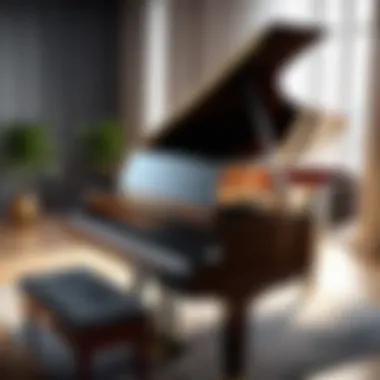
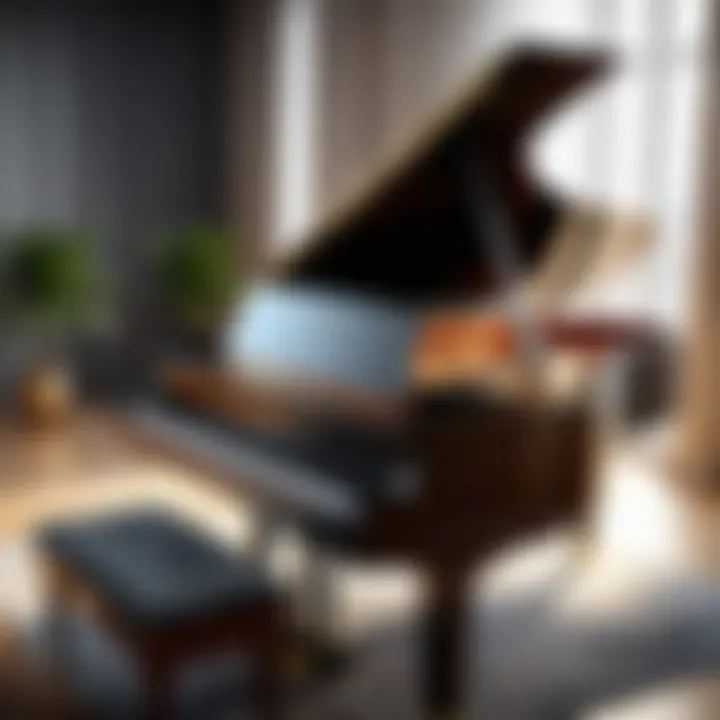
In recent years, there has been a notable increase in classical music content on YouTube. This phenomenon can be attributed to several factors. Firstly, the growing interest in music education and appreciation via online platforms has encouraged creators to produce engaging content. Channels dedicated to classical music, ranging from formal performances to casual discussions about composers, have emerged and flourished.
Another contributing factor is the desire for accessibility in all forms of art, classical music including. Many artists and ensembles are taking advantage of YouTube to reach audiences who may not have the opportunity to attend live performances. The variety of content available—ranging from full concerts, solo performances, and even behind-the-scenes looks—makes classical music more approachable. This democratization of content enables listeners to engage with the genre on their own terms and fosters a broader appreciation of its richness and diversity.
"YouTube has changed how audiences experience classical music, making it accessible to more people than ever before."
Content creators on YouTube are now presenting classical music in innovative ways. For instance, performances are often accompanied by visually compelling videos. These elements draw in viewers who might otherwise overlook traditional classical music. With this rise in content comes the responsibility of ensuring quality and accuracy, a point to consider as classical music continues to gain traction in the digital space.
Key Features of YouTube for Classical Music Enthusiasts
YouTube serves as a significant platform for classical music enthusiasts, presenting various features that enhance the experience of listening to this genre. The impact of technology on how we consume music is profound. For classical music, YouTube offers both accessibility and a wealth of content that may not be easily found elsewhere. This section explores two primary features: high-quality audio and video options, and the accessibility of live performances. Each of these elements plays a crucial role in the way audiences engage with classical music.
High-Quality Audio and Video Options
In the realm of classical music, audio and visual quality significantly influences the listening experience. YouTube accommodates this expectation by offering high-definition audio and video settings. The platform’s capability to stream quality content ensures that users can immerse themselves in the nuances of a symphony or a solo recital, enabling a close connection with the performance.
YouTube allows content creators, including orchestras and solo artists, to upload concerts and recordings with superior quality. This feature is valuable for classical music pieces, where subtle details are critical. Users can adjust the video quality depending on their internet speed and preferences, ensuring they maximize their viewing experience. This flexibility supports both amateur listeners and aficionados seeking a rich auditory journey.
Accessibility of Live Performances
One of the standout attributes of YouTube is its ability to provide access to live performances. Many major orchestras and renowned artists now stream their concerts on the platform, granting viewers worldwide the chance to experience events they might not otherwise attend. This accessibility breaks geographical barriers and makes live performances reachable to a broader audience.
Moreover, these broadcasts often include behind-the-scenes content, such as rehearsals and interviews with musicians. This additional context enhances the understanding and appreciation of the music, featuring discussions that elaborate on compositions or the background of particular pieces. The community aspect of commenting and sharing these live shows also encourages audience engagement.
YouTube has democratized access to classical music, bridging the gap between artists and audiences.
Popular Classical Music Channels on YouTube
The presence of classical music channels on YouTube is not just a convenience; it represents a significant evolution in how audiences access and engage with this timeless genre. These channels provide unique platforms where both aspiring and established musicians present their work. The importance of these channels lies in the ability to reach a global audience, thus democratizing classic music. This means that anyone with an Internet connection can explore a vast variety of performances, educational content, and artistic interpretations.
Many channels also serve as cultural archives. They house performances that may no longer be available through traditional media. Furthermore, they introduce diverse styles and emerging talents to viewers who might be looking for innovative interpretations of their favorite pieces. Each channel brings its unique flavor and perspective to classical music, making the platform rich with opportunities for exploration.
Orchestral Channels
Orchestral channels on YouTube typically feature full performances of well-known orchestras from around the world. These channels offer viewers a chance to experience symphonies and concertos performed by talented musicians without the constraints of geographical boundaries. Some prominent channels are the London Symphony Orchestra and the Berlin Philharmonic.
Watching these performances online becomes an educational experience. Viewers can see grand orchestral arrangements, understand conductor techniques, and identify the various sections of the orchestra. This not only enhances appreciation for the music but engages viewers in a richer way than audio alone.
Solo Artist Channels
Solo artist channels often highlight individual musicians playing instruments like piano, violin, or cello. These channels provide intimate performances that differ from orchestral presentations. Artists like Lang Lang and Yo-Yo Ma leverage their channels to showcase their interpretations of classical pieces, sometimes mixed with contemporary works.
Through these performances, viewers gain insight into the personal connection artists have with the music. Musicians often share their thoughts on specific compositions, which can provide viewers a deeper understanding of the pieces. Moreover, many solo artists use their platforms to interact with fans, promoting community and engagement around their work.
Educational Platforms
Educational platforms are essential for fostering a better understanding of classical music. Such channels focus on teaching music theory, history, and performance techniques, making high-quality information accessible to everyone. Channels like The Piano Guy provide tutorials ranging from beginner to advanced levels.
These platforms do not just teach music; they promote an analytical approach towards understanding compositions. They dissect musical pieces and contextualize them within cultural histories, which is instrumental for anyone looking to appreciate classical music more deeply. By utilizing a variety of video formats, including lectures, documentaries, and practical demonstrations, these channels ensure comprehensive learning experiences.
As classical music continues to expand its reach through these channels, the audience's landscape changes too. People from varying backgrounds come together to appreciate and discuss their shared love for this genre. This growing community around classical music on YouTube shows the remarkable potential of the platform to inspire and educate.
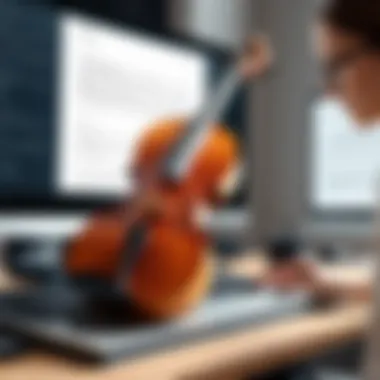
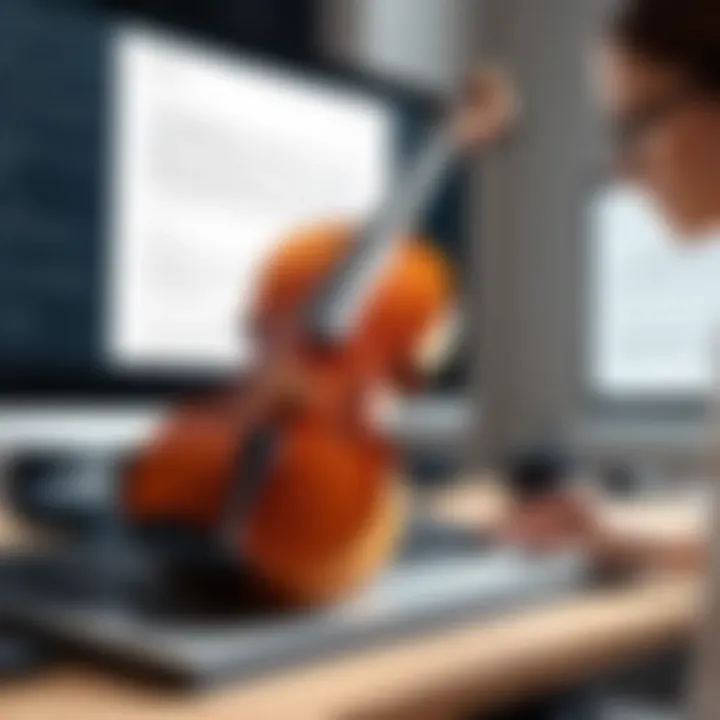
The future of classical music lies in its ability to evolve while remaining true to its roots, and YouTube is at the forefront of this transformation.
Exploring the Content: Genres and Styles
In the realm of classical music, genres and styles serve as the backbone that defines the diversity and richness of the art form. Engaging with this variety through YouTube transforms the classical music experience for many. This approach allows audiences to explore different eras, composers, and forms that represent the evolution of music itself. Exploring genres like Baroque, Classical, Romantic, and Contemporary styles on YouTube engages diverse audiences and provides layers of appreciation that may not be accessible in traditional settings.
By utilizing YouTube, enthusiasts can discover not only the most celebrated works but also lesser-known pieces that enrich their understanding. The platform’s vast library contains treasures from every significant period, ensuring that no artistic era is left unexamined.
Baroque and Classical
The Baroque period of music, spanning from approximately 1600 to 1750, laid the groundwork for many musical conventions still in use today. Composers such as Johann Sebastian Bach and George Frideric Handel produced works rich in polyphony, a hallmark of the era. On YouTube, viewers can find meticulously recorded performances that showcase the intricate counterpoint and ornamentation of Baroque compositions.
When discussing Classical music, a shift occurs toward the balanced elegance of the late 18th and early 19th centuries. Haydn, Mozart, and Beethoven are pivotal figures whose contributions are accessible on various channels. Listening to these composers' works helps one recognize the clarity and formality strategies that influenced later genres. There are significant playlists dedicated solely to Baroque and Classical music, offering a pathway for listeners to immerse themselves in these profound styles.
YouTube serves not only as an archive but also as a vibrant space for interpretation. Performers approach these pieces with different styles. For instance, some may favor historically informed performance, while others may adopt a modern interpretation. This variability expands the listener’s insight into Baroque and Classical music, illustrating its enduring impact.
Romantic and Contemporary
As music progressed into the Romantic period, approximately 1820 to 1900, the expressive possibilities expanded. Composers like Franz Schubert, Johannes Brahms, and Pyotr Ilyich Tchaikovsky prioritized emotional depth and individualism in their compositions. This emotional resonance can be easily felt when listening to their performances on YouTube. The platform features live orchestral performances, chamber music, and solo recitals, allowing listeners to connect deeply with the nuances of the Romantic style.
In contrast, Contemporary classical music pushes boundaries. Composers like John Adams and Philip Glass explore new textures and structures, often utilizing technology to create pieces that challenge traditional norms. YouTube is vital in showcasing this evolution, providing access to new works and ground-breaking performances that redefine what classical music can encompass today.
With channels dedicated to contemporary classical music, viewers can witness live performances, notated analyses, and discussions on emerging trends. This immersion highlights how classical music adapts to reflect modern society.
In summary, exploring genres and styles of classical music on YouTube deepens appreciation while enhancing accessibility. Whether it’s through masterpieces of the Baroque or the innovative sounds of contemporary composers, audiences benefit from a broad range of options. The wealth of content available cultivates a space for both new and seasoned listeners to engage with classical music in dynamic and meaningful ways.
The Impact of YouTube on Classical Music Appreciation
YouTube serves as a pivotal platform for classical music, reshaping how audiences access and appreciate this timeless genre. It is beyond just a venue for viewing performances; it acts as a transformative space where traditional boundaries are blurred. People can now engage with classical music in ways that were previously unimaginable, and this impact is significant.
Democratization of Classical Music
The essence of democratization in classical music lies in accessibility. Before the digital age, attending a live concert often required significant resources: tickets, travel, and sometimes even membership to an exclusive venue. YouTube has altered this paradigm remarkably. With just an internet connection, anyone can hear the music of composer's like Bach, Beethoven, or Tchaikovsky without any financial burden.
This shift is especially vital for today's younger audience. Many individuals find the classical music world intimidating due to its perceived elitism. YouTube strips away these barriers, allowing users to explore vast collections of performances at their own pace. For instance, channels dedicated to classical music feature symphonic performances, chamber recitals, and even conductors providing insights.
Furthermore, users can actively participate in discussions through comments or on platforms like Reddit or Facebook. By doing so, they share experiences and recommendations, contributing to a communal appreciation of the genre. This is an essential development as it fosters a global conversation around classical music, encouraging diverse perspectives and interpretations.
Engagement of New Audiences
YouTube plays a significant role in bringing classical music to new listeners who may have never ventured into concert halls. The platform's vast reach introduces these audiences to a plethora of styles and composers. For example, a user searching for relaxing music might stumble upon a performance of Debussy’s works and find an affinity for it, leading to further explorations into classical genres.
Several factors contribute to this engagement:
- Curated Playlists: These often blend classical music with contemporary genres. This strategy can introduce audiences to classical pieces that remix modern popular songs, making the genre more relatable and inviting.
- Educational Content: Channels often create content that educates viewers through tutorials or historical context, making classical music more accessible.
- Live Performances: Streaming live performances allows users to experience concerts as they happen, providing a sense of involvement without the need to attend in person.
The engagement does not just stop with listening; it extends to how viewers interact with the content. Platforms on YouTube encourage user-generated content, where people can upload their performances or interpretations of classical pieces. This not only democratizes performance but also invites fresh voices into the conversation, enriching the classical music landscape.
"The digital age invites us to rethink how we perceive music genres, opening doors for appreciation and participation in ways we never before considered."


As a result, the impact of YouTube on classical music appreciation is profound. It expands access, allowing individuals from various backgrounds to explore and enjoy classical music. Through these revelations, the genre finds itself rejuvenated, as new audiences become familiar with its depth and beauty.
Challenges of Classical Music on YouTube
The advent of YouTube has undeniably reshaped the classical music landscape. However, this platform does not come without its challenges. These problems are not merely technical but extend to issues pertaining to intellectual property, content quality, and misrepresentation in the realm of classical music. Understanding these challenges is crucial for both content creators and audiences alike, as they influence the overall experience and accessibility of classical music on this popular video-sharing platform.
Copyright Issues and Monetization
Copyright laws significantly affect how classical music is presented on YouTube. Many classical compositions are under copyright restrictions, affecting creators looking to monetize their content. When creators upload videos, they risk having them removed or demonetized if they do not have the rights to use the music. This can be frustrating for symphonies, solo artists, and educators using the platform to share their work.
There are various ways in which copyright issues manifest:
- Content ID System: YouTube employs a system that automatically scans uploaded videos for copyrighted material. If it detects a match, it may block the video or redirect ad revenue to the copyright holder.
- Licensing Fees: Some channels choose to obtain licenses for their music, but these fees can be prohibitively expensive for smaller or independent creators.
- Fair Use Debate: Many content creators argue that their work falls under "fair use," particularly in the context of educational content. However, the legal boundaries of this concept remain ambiguous, leading to uncertainty.
Addressing these copyright issues requires ongoing dialogue between creators and copyright holders, ensuring that artists can share and monetize their work while respecting ownership rights.
Quality Control and Inaccurate Representations
Quality control is another major concern for classical music on YouTube. Unlike traditional curators and record labels, the platform allows anyone to upload content, which can lead to a wide array of audio and video quality. This can create confusion for listeners who are looking for authentic performances.
Several aspects contribute to quality challenges:
- Audio Quality: Poor sound engineering often leads to subpar listening experiences. Users may stumble upon recordings that lack clarity or balance, which diminishes appreciation for the music itself.
- Misleading Titles and Information: Some videos may misrepresent the content, claiming to feature well-known orchestras or soloists when, in fact, they don't. This can mislead audiences, leading to disappointment.
- Lack of Context: Many uploads do not provide sufficient contextual information regarding the pieces performed. Without background, listeners may struggle to appreciate the nuances of the music.
These quality issues highlight the need for improved systems that ensure the integrity of classical music content on YouTube. As a community, both creators and audiences must advocate for better standards, sharing experiences and recommendations to cultivate a more enriching classical music environment.
Future Trends in Classical Music Content on YouTube
The landscape of classical music on YouTube is evolving rapidly. This evolution is not just about the music itself, but how it is accessed and experienced. Several emerging trends signal how the integration of technology and collaboration with mainstream platforms are reshaping classical music content for broader audiences. It is essential to examine these trends to understand the future of classical music on this platform.
Integration of Emerging Technologies
Technology plays a crucial role in expanding the ways in which classical music is experienced. Virtual reality (VR) and augmented reality (AR) have begun to creep into the realm of classical performances. These technologies can provide immersive experiences that traditional recordings cannot achieve. For instance, audiences can experience a concert from the perspective of sitting in the conductor's seat. This transformation can make classical music more relatable and engaging to a younger demographic, especially those who might find traditional concert settings intimidating.
Moreover, artificial intelligence (AI) is now being utilized in music composition and even performance. YouTube channels that showcase AI-generated compositions are gaining traction. This innovation prompts discussions about originality and creativity in music, as well as how audiences interact with these new forms. Additionally, machine learning algorithms help curate personalized playlists based on user preferences. Higher engagement metrics are likely as viewers find classical pieces that resonate with their tastes.
"The intersection of music and technology is not just a trend; it's a new way to perceive art and improve accessibility for everyone."
Collaboration with Mainstream Platforms
Traditional forms of media are increasingly collaborating with YouTube to reach larger audiences. Major orchestras and classical music institutions have begun to forge partnerships with YouTube to produce high-quality content that is both informative and entertaining. For example, collaborations with companies like Netflix and Amazon Prime have resulted in documentaries and series featuring classical music that explore its impact on culture.
These partnerships enhance the visibility of classical music in a crowded digital space. They introduce complexities regarding licensing and content creation, but the opportunity to engage a higher audience is undeniable. By merging platforms, classical music can become part of broader discussions around music and culture, appealing to a wider audience that may not actively seek it out otherwise.
In summary, the future of classical music on YouTube is poised for significant change. The integration of emerging technologies enriches the musical experience, while thoughtful collaborations with mainstream platforms broaden the audience reach. These trends collectively enhance both the appreciation and accessibility of classical music in an increasingly digital world.
Finale
The significance of conclusion within this article lies in encapsulating the insights and discussions surrounding classical music on YouTube. This examination uncovers not just the current landscape but also the entire process of how digital platforms like YouTube facilitate the engagement with classical music. Key elements such as accessibility, variety of content, and the impact of emerging technologies represent the advantages that YouTube presents to enthusiasts of this genre.
Summary of Insights
In summarizing the insights, one can observe that the democratization of classical music through YouTube has reshaped audience interaction with this art form. Viewers are no longer confined by geographical or financial barriers; they can engage with orchestras, solo artists, and educational resources from their own homes. The blending of traditional settings with modern technology enhances learning and appreciation. Furthermore, this transition supports not only established musicians but also emerging talent, providing them a platform to showcase their work.
The Ongoing Evolution of Classical Music Online
The evolution of classical music on this platform is continuous and adaptive. Innovative technologies, such as virtual reality and augmented reality, are slowly penetrating this landscape, promising more immersive experiences. As collaborations with mainstream platforms increase, the potential for a fusion of genres and cross-reach expands. Consequently, future directions may lead to a richer tapestry of content that draws diverse audiences. This highlights the importance of remaining open to change within both the classical music community and its audience, fostering a culture of exploration and engagement.
"YouTube represents a new frontier for classical music, allowing it to thrive in the digital age while preserving its rich heritage."
This article concludes by reinforcing the ongoing effects of technology on classical music appreciation. Each viewer possesses the ability to curate their experience, enhancing their understanding and love for the genre. In a rapidly changing world, the adaptability of classical music in utilizing modern platforms presents a hopeful outlook for its future.







